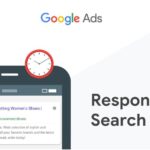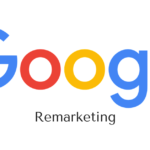The brain. It is the control center for every process in your body, every feeling you have, every movement. It’s fascinating to think about how many commands and signals it sends and receives every day. But with so much to do, and at such a fast pace, your brain is always looking for ways to get its jobs done faster.
This is particularly true when it comes to cognitive functions, such as remembering, problem-solving, and, what we’re talking about today—decision making. When it comes time to make a judgment or act, the brain largely relies on past information it has stored in order to quickly reach a verdict—even at the expense of the quality of the decision.

So in terms of consumers making purchasing decisions, being aware of these shortcuts can help you to understand, predict, and leverage their behaviors in your favor. No, you’re not looking to maliciously manipulate your prospects and customers. But yes, there are ways to influence their actions—actions they will be glad they took.
In this article, you’ll learn six psychological principles you can leverage in your marketing and influence the buying decisions of your prospects.
- Social proof
- Anchoring
- Reciprocity
- Commitment and consistency
- Mere exposure effect
- Paradox of choice
- Pygmalion effect
Let’s begin.
7 marketing psychology tactics to influence purchasing decisions
For each of the seven tactics in this post, we’ll explain what each one is, offer some simple examples, and then provide specific ways you can leverage them in your marketing strategies—whether for your website, product pages, landing pages, and more.
1. Social proof
This term was coined by the author Robert Cialdini in his book Influence. It’s the idea that people tend to follow others in novel situations where “appropriate” behavior is unknown to them. Such conformity is practiced by people so that they are liked and accepted.

Here are a few ways you can use social proof to influence buyer behavior.
Add testimonials to your website and landing pages
The most common example of social proof is the testimonials you often see on a product’s landing page. And Visitors feel more confident in conforming to existing customers’ behaviors, and this is a great place to set that in motion.

Produce a dedicated testimonial page
Even better, you could create a dedicated testimonial page so prospective clients can see consumers or companies just like them, benefiting from your solution. For example, below is the testimonial page on the LOCALiQ website. Notice that you can filter by industry or service provided—which is ideal.

Highlight endorsements from popular brands
You may also want to include the logos, or in the example below, the faces, of any big names or brands that use your product (with their permission, of course).

Another similar option would be to list major media outlets that have featured your product.
Seeing these familiar faces and names endorsing your offering helps potential customers to feel confident and secure that you deliver results.
Include stamps of approval
If you have partnerships, awards, or other “trust seals” that speak to your credibility, add those too!

Use the numbers to get more subscribers
You don’t always need a prominent name to build trust and get signups for your offers. There’s also the “wisdom of the crowd” approach, where you can boast that a large group of people is using your products or resources.

Image via Rochi Zalani
2. Anchoring
The anchoring bias is the tendency of an individual to use the first piece of information presented to them as a benchmark (or anchor) for making their decision. As you can imagine, this tactic is particularly useful for pricing.

Here are some types and examples of anchoring:
Indicate mark-downs
Here’s a simple example that Amazon uses all of the time. The visitor sees that the original price is higher than the discounted price. Not only does the buyer see this as a bargain, but also, a higher starting price tends to send the message that the item is of higher value.

But every business has a unique audience with unique perceptions on price. Make sure you understand how pricing changes affect the perceived quality of your products in the eyes of consumers.
Show the amount saved
Many SaaS and subscription companies offer a cheaper annual plan over their monthly subscriptions, as with Zoom in the example below. Another way to display this would be to show the monthly rate for the month-to-month plan, and then the reduced monthly rate for the yearly plan. However, if the difference is not all that significant, it may be more worth your while to show the total savings from the year.

3. Reciprocity
When someone is kind to you, do you feel compelled to act in the same manner? This is reciprocity—the human tendency to want to respond to a kind gesture with one of their own.
Sociologist Phillip Kunz conducted an experiment in 1974, whereby he sent 600 Christmas cards to complete strangers (selected at random). In response to his kind gesture, approximately 200 strangers replied back. That’s reciprocity at work. Here’s what reciprocity might look like in your marketing:
Provide free (valuable) information and education
In your marketing strategy, you can leverage this psychological phenomenon by offering free value-adds to your customers. A classic example is offering free education or downloadables to your audience. For example, LOCALiQ has their Marketing Lab, a free learning hub for local business owners and marketers.

They also offer free templates in their blog posts. Now, your readers can’t reciprocate by providing free education back to you, but let’s say they’re deciding between your company and a competitor, and you both have great reviews. Which company do you think they’ll feel more inclined to choose? The one that has been generously providing resource all along or the one with only social proof?
Offer free tools and trials
In the B2B SaaS industry, a great example of reciprocity would be offering a free trial of your software or a free tool. WordStream, of course, has their Free Google Ads Performance Grader, which performs over 40 hours of audit work for you in a matter of minutes. Again, if it comes down to deciding between one agency and another, the buyer may be more inclined to reciprocate your free and valuable offerings with their business.
4. The commitment and consistency bias
The commitment and consistency bias is one where, once we heed a small request, we are more likely to comply with a larger one later. This comes from our inclination to exhibit behaviors consistent with preceding ones. The foot-in-the-door technique makes use of this bias, and here are some ways it is used in marketing.
Encourage movement down your marketing funnel
The marketing funnel is structured around this type of behavior. At the top of the funnel are small requests (aka calls to action), and then they gradually get bigger as the prospect moves downward to the bottom.

For example, you ask readers to read your content, then you ask them to give their email in exchange for a free guide, then you ask them to attend an event or webinar, and then you invite them to a free trial or consult.
Since the consumer is inclined to keep their behaviors consistent, they are more likely to continue pursuing and engaging with the content and offers from the business they first started with. Plus, compared to the first action (reading a blog post), a free trial is a big jump, but compared to the previous action (attending a webinar), it’s not as drastic.
Get more account signups
Yelp uses the commitment and consistency bias to gain more signups.
The platform lets you draft reviews without creating an account. When you begin writing, Yelp uses motivational microcontent such as “Don’t leave us hanging – what else you got?” to encourage you to complete the review.

Then, once you finish the review, they ask you to create an account—without which you can’t post your review.

Now you don’t have to create an account and post the review, but more likely than not, you’ve put in the effort to write it, so you want to make the time you spent worth it. You’re not going to abandon the process midway, are you?
Increase engagement with long-form content
You can also leverage the commitment and consistency bias to increase engagement with your content—particularly long-form content over 5,000 words. Instead of just asking your audience to commit to reading an article that they don’t yet know is worth their time, present it in bite-snack-meal form.
- Bite: Small piece of information without details.
- Snack: Combination of bites. Audience wants more information but not detail.
- Meal: Large piece of information, filled with details and thorough explanations.
For instance, I have an extensive review of Grammarly on my site, Elite Content Marketer. Instead of asking readers to commit to reading the whole piece, I start with the bite and the snack upfront. The bite is the overall verdict. The snack is visual of the pros and cons of the product. And then the meal is the detailed review.
If the reader has engaged with the smaller, more digestible pieces of information at the beginning, they will be more likely to perform the larger request: to read the full piece. Should they choose not to read it, they can at least get the key takeaways at the top and obtain value from the content.

5. The mere exposure effect
Also referred to as the “familiarity principle,” this is the concept that more you develop familiarity with something, the more you prefer it.

Run display ads for brand awareness
Display ads are known to have lower click-through rates than Search ads (where there is a higher intent match), but they are useful for generating brand awareness. The more times a consumer is exposed to your brand—even if just for a split second—the more familiar it becomes in their brain.
Use retargeting ads to increase CTR
The number one way you might have leveraged this effect is through retargeting your prospects. Indeed, retargeting ads are 76% more likely to be clicked than a regular display ad. Here are the differences in CTR for remarketing ads vs. regular display ads:

But watch your frequency because if your ad keeps aggressively following a prospect on the internet, you can quickly become that annoying brand that doesn’t care about privacy. An appropriate delay between exposures gives them time to settle in so the repetitions are more effective.
Send the same message across all channels
You can also repeat your messaging and unique value proposition (USP) across your brand assets, including your website, blog posts, newsletters, ads, and other touchpoints. As a prospect becomes more and more familiar with your USP, the more appealing it becomes. And this is why including an array of channels and mediums in your content marketing strategy is so important.
Ahrefs CMO Tim Soulo recently mentioned how their blog, receiving close to 400k monthly visitors (as per their own tool), facilitates the mere exposure effect.

Promote your content
The mere exposure effect also makes a strong case for promoting your content on social media (and encouraging others to promote it too), especially your guides and blog posts. You can share the same content more than once—just make sure you allow enough time in between postings. You can use the approximate timeline below as a guide.

6. Paradox of choice
Let’s say you’re at the supermarket and you just want to buy some tea. As you approach this part of the aisle, all the different kinds of tea looks great. But as you start browsing, you start feeling not-so-great. There’s white, green or red. There’s regular, decaf, and caffeine-free. And then there’s all of the different flavors. And that’s just for one brand!
With too many options to choose from, you start feeling stressed in choosing the one that best fits your needs. That’s the paradox of choice!

Psychologist Barry Schwartz (who also authored a book on this subject) gave a popular TED Talk sharing this idea of choices leading to anxiety in shoppers. As the number of options to choose from increases, a buyer becomes paralyzed in their decision-making, and sometimes choose nothing at all. Further, it can lead to post-purchase regret with the possibility that the other choices were better.

Here are some ways to remove analysis paralysis for your audience.
Limit the number of items in your main navigation menu
While a big part of marketing is to go against the norm so you can stand out, there are still many areas where this could work against you. For example, you might see that a competitor has just five items in their website’s navigation bar. So maybe you think to have 10 in yours so prospects can see that you have more to offer. The truth is, websites should only have 3-6 items in their navigation bar.
Too many options to choose from, and the visitor becomes confused on what to do or where to go. By narrowing down those menu options (and even the other click options on the home page), you spare them from these uneccesary decisions so they have the mental energy to make the more important ones as they get deeper into your site.
Have only CTA per landing page
You’ve heard this a thousand times, but it’s worth repeating. You should have one unique landing page for each product or offering, with one clear call to action per landing page. Multiple options will distract your prospects from the desired action you want them to take, can make for a less cohesive user experience, and can lead to a loss of conversions. And when you’re running paid ads, you can’t afford to waste your ad spend.
Remove social sharing buttons
So maybe you’ve removed the email signup button from the page where you want users to buy now. But are there other options to click on the page that are less prominent? Is there a link-heavy footer on the bottom? What about social media icons that link to your profiles or allow the visitor to share? In a case study by VWO, they were able to increase the conversion rate of their product page by 12%, simply by eliminating social share buttons.
Here’s another before-and-after that demonstrates this best practice:

7. The Pygmalion effect
This last psychological tactic can be used both on your customers and your own team.
The Pygmalion effect, also known as the Rosenthal effect, says that if you, or others, believe something to be true of yourself, it will eventually become so. So if a teacher holds his or her students to high standards with the belief that they are capable of meeting them, the students are highly likely to perform better. Similarly, setting high standards for your employees with enthusiasm can have the same effect.

Unify your team and improve the customer experience
This is why identifying the core values for your brand—and keeping those top-of-mind with your team—is so important. This gives individuals a clear set of expectations and qualities to strive for and incorporate into everything they do. The more positive feedback they receive, the more and more they will truly exemplify those values. This not only makes for a unified team, but also makes for a consistent and extraordinary customer experience.
Indeed, expectations can shape reality.
Create a positive feedback loop with your customers
You can also apply this tactic directly to your audience. By conveying that a higher level of performance is attainable, a better version of themselves is on the horizon, or that they can become the best in their field, you encourage them to act in a way that aligns with those beliefs.
These actions might start out by downloading your content or following you on social media. The more confidence they have that they can achieve their goal with your help, and that they’re already on the way to doing it, the more likely they are to be a customer. Even better, as they achieve their goals over time, they can become loyal customers.
Hold your team to high standards and show your customers that they are capable of achieving their goals, and success will flow from there.
Use psychology responsibly in your marketing
I don’t want to spoil the party here, but given that we’ve discussed some cognitive biases —which are essentially “errors in thinking”— I want to remind you to use them responsibly.
Yes, you can use them to win over more customers, but remember these points:
- Make sure that their decision to choose you is truly the best one for them. Don’t employ these tactics to consumers for whom your product or service is not a good fit. Don’t use these tactics to make promises you can’t keep or to represent more capabilities than you have.
- A customer who feels “cheated” may feel inclined to get back at you (remember the principle of reciprocity?). They might spread negative word of mouth about your brand to others, in person or online.
- When using these tactics, align your business goals with those of your prospective buyers to make it a win-win.
- Stay patient. Allow enough time to see results in your data.
Focus on building great products and earning the trust of your audience through responsible marketing strategies. It’s a combination proven to work better in the long term.



Leave A Reply